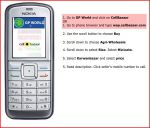From my own observations, namely the list of ICT4D projects, I think it is a fair comment that most of the initiatives are aimed at information delivery, rather than information collection. Many market information systems profess delivering benefits and improving livelihoods by providing access to up-to-date price information. But rarely publicity documents mention how exactly the information is collected, how its accuracy is assured, or how it is put to use. Occassionally, market information systems are backed-up by extensive and robust networks of ennumerators who are experienced in data collection. The cases of TradeNet/ Esoko in Ghana and Trade at Hand’s mCollect project, come to mind. In such cases I can be convinced of the value of the delivered market information content. In other cases I tend to be a bit more sceptical.
Here I have two videos touching on the topic of data collection. In the first video, Mr. Patrick Meier from Harvard Humanitarian Initiative (HHI), who writes iRevolution discusses crisis mapping and early warning systems. His work brings together data collection and geo-spatial information. His ideas can be staightforwardly applied to the mapping of stocks and frows of food products. Mr. Meier overviews lessons learned, best practices and current thinking in the emerging field of crisis mapping.
Mr. Meier stresses four main areas of crisis mapping. The first one is crisis map sourcing. The technologies he overviews can easily be applied to market data collection, or in his terms price map sourcing, which would involve the collection of geo-refernced and time-stamped price information. The crowd sourcing methods mentioned in Mr. Meier’s presentation include surveys, focus groups, satellite imagery, participatory GIS, annotated digital maps such as the ones which can be produced via Ushahidi, as well as mobile technologies such as text messaging via FrontlineSMS. Mr. Meier also discusses the accuracy of the crowd-sourced data, he mentions the design principles of data validation and triangulation. Two interesting initiatives which could be adopted in the field of market information monitoring are the Humanitarian Sensor Web, identifying relevant infrastructure; and the Mesh4X automated synchronisation of disperate datasets which makes information sharing seamless.
The second are of interest is crisis data visualisation, including social mapping (i.e. distances on the map represent social perceptions), 3D GIS, pdf-mapping and dynamic maps. The third area is crisis mapping analysis where maps are used as indications of large-scale behavioural patterns over time and space. The fourth area of interest is crowd-feeding, in my understanding the reverse of crowd-sourcing or in other words information delivery services. Mr. Meier mentions response crowd-feeding whereby information is sourced from some in order to be delivered to others who need it the more.
Vodpod videos no longer available.
In the second video Mr. Ian Puttergill, Business Development Manager, Unlimited Potential Group, Microsoft, Soth Africa shares his views on how data can be collected using mobile phones. Firstly, he emphasises the accuracy of the information sources and argues that mobile phone communication is applicable when the accuracy threshold is lower. Mr. Puttergill stresses that a filter is needed for data collection implementations so that irrelevant information can be discarded. He also mentions a loop re-entering information when the format is not correct. Additionally, Mr. Puttergill discusses business models for mobile information services, focusing on socially relevant information as key for finding suitable commercial models, non-profit models, or advertising models.
The videos, the thoughts of Mr. Puttergill and the information provided by Mr. Meier give a lot of food for thought regarding the design of market information services which include rigorous information sourcing methods, allow for mapping of the agricultural product stocks, and are based on sustainable business models. Please get in touch with me if you are interested in discussing the topic further, or comment below.




